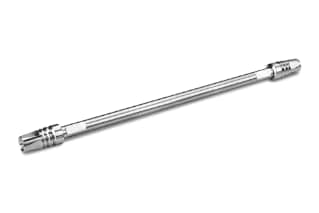
|
Chemistry |
C18 |
|
Separation Mode |
Reversed Phase |
|
Particle Substrate |
Silica |
|
pH Range Min |
2 pH |
|
pH Range Max |
8 pH |
|
Temperature Limits |
45 C |
|
Maximum Pressure |
18000 psi (1240 Bar) |
|
Endcapped |
Yes |
|
Bonding Technology |
T3 |
|
Silanol Activity |
Medium |
|
Molecular Weight Range Min |
1000 |
|
Molecular Weight Range Max |
15000 |
|
Particle Shape |
Spherical |
|
Particle Size |
1.8 µm |
|
Endfitting Type |
Parker-style |
|
Pore Size |
100 Å |
|
QC Tested |
Peptide |
|
Format |
Column |
|
Surface Area |
230 |
|
System |
UPLC, UHPLC |
|
Particle Technology |
HSS |
|
USP Classification |
L1 |
|
Inner Diameter |
2.1 mm |
|
Length |
150 mm |
|
Carbon Load |
11 % |
|
UNSPSC |
41115709 |
|
Application |
Peptide |
|
Brand |
ACQUITY UPLC |
|
Product Type |
Columns |
|
Units per Package |
1 pk |

What Is Sensitivity Within Chromatography?
Sensitivity refers to the signal output per unit concentration or unit mass of a substance in the mobile phase entering the detector, as an example, the slope of a linear calibration curve. Sensitivity also refers to the ratio of peak height to the analyte concentration in the peak for concentration-sensitive detectors. It is the ratio of peak height to unit mass in mass-flow-sensitive detectors.
What Are Some Of The System Limits Using Acquity UPLC Peptide HSS T3 Column?
The Acquity UPLC Peptide HSS T3 Column can be operated between a pH range of 2 - 8, with a temperature ceiling of 45 C, and up to a maximum pressure of 15,000 psi (or 1034 Bar).